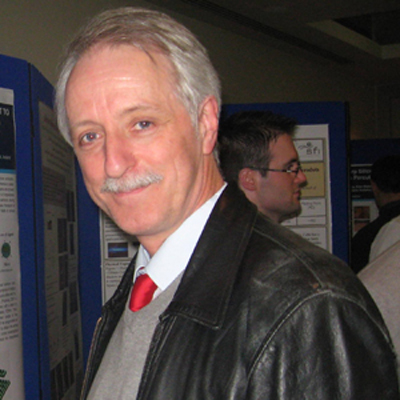Dr Patrick Prendergast, provost of TCD, pictured at Beihang University in Beijing, China, in October 2012 during a keynote to mark the 60th anniversary celebration conference on engineering education and university-industry co-operation. Credit: TCD
Bio-engineer Dr Patrick Prendergast, the provost of Trinity College Dublin (TCD), and John Pethica – a physics professor who is a founding director of CRANN and the Naughton Institute at TCD – have been elected as fellows to the Royal Academy of Engineering. They are among 60 new fellows who have been elected to the UK engineering body.
Prendergast’s and Pethica’s election to the Royal Academy of Engineering was announced this week, as part of the body’s election of fellows from academia and business who have made a difference to society through the field of engineering.
Announcing the election of the new fellows, Sir John Parker, president of the Royal Academy of Engineering, welcomed the pair to the Academy.
Speaking about the 60 new fellows, he said that, with their “expertise, knowledge and vision”, the Royal Academy of Engineering will vie to vamp up its goal to provide “authoritative, impartial, and expert” engineering advice to the UK government.
With a first degree in engineering, Prendergast is probably best known in Irish engineering circles for being a pioneer of biomechanics.
Prior to becoming provost of TCD in August 2011, he was founding director of the Trinity Centre for Bioengineering and, from 2007, professor of bio-engineering at the Irish university.
Prendergast’s areas of research include tools for computer simulation in mechanobiology and the science of how mechanical forces affect biological growth and remodelling. The latter has a particular reference in recent work to stem-cell engineering.
He has also studied the computational modelling of the performace of medical devices. Previously, he was a non-executive director of the Wexford-based Clearstream Technologies, between 2009 and 2011.

Prof John Pethica. Credit: TCD
Nanotechnology vision
Pethica, meanwhile, is a professor of physics at TCD. At the university, he is known for being founding director of the SFI-funded nanoscience institute CRANN and the Naughton Institute. In addition, he holds the post of chief scientific advisor at the UK National Physical Laboratory.
His research interests span nanotechnology, in the fields of surfaces, thin films, atomic- and nano-scale structures.
Pethica has also devised the technique of nano-indentation for the mechanical characterisation of surfaces and thin films, which now has applications across surface coating and manufacturing industries.
At the minute, he is working on the mechanics of thin polymer films for lithography and device applications, plus on atomic scale manipulation at surfaces.
Ireland’s oldest university, founded in 1592 – did not admit women students until 1904

View of the statue of George Salmon in Parliament Square at TCD. As well as being a mathematician and theologian, Salmon (1819-1904) was provost of the university until his death in 1904. He opposed the admittance of women to TCD. The sculpture of Salmon appears to have been carved out of Galway marble by the sculptor John Hughes. Image courtesy of the composer Matthew Barnson, assistant professor of composition at TCD
Since it was founded more than four centuries ago, the provost has been the name for the head of TCD. The title is the equivalent of the president, rector, or vice-chancellor in other universities.
Prendergast is the 44th provost to be appointed since the foundation of TCD by Queen Elizabeth I in 1592.
At the time, the university was modelled on the style of Oriel College, University of Oxford and St John’s College, University of Cambridge. TCD is a sister university to both of these universities.
Women and STEM
It was only in 1904, however, that women were allowed enrol at TCD – women students were admitted subject to restricting rules.
Despite this advancement, women students were restricted in what they could do at the university until the 1960s. For instance, they could not be seen on the TCD campus after 6pm or eat in the college Commons. Apparently, they could only return to the library or an evening meeting by signing themselves through TCD’s front gate off College Green.
All this changed in the late 1960s, with the women’s movement that took place in Ireland.
Since then, the Centre for Women in Science and Engineering Research (WiSER) was set up at TCD in 2006 in order to advance gender equality at the university.
The centre works to “recruit, retain, return and advance” women in academic science, engineering and technology (SET).
According to the 2011-12 annual Equality Monitoring Report, women account for 59pc of the overall student population (16,747 students) at TCD.
Education-wise
Finally, in terms of their education, Pethica graduated from the University of Cambridge with a BA and PhD in physics. He became an SFI research professor at TCD in November 2001.
Prendergast, meanwhile, is a chartered engineer and a fellow of the Institution of Engineers of Ireland.
He obtained a BAI in 1987 and a PhD in 1991, both from TCD. In 2009, Prendergast earned a ScD in bio-engineering at the university.
He is set to remain as provost at TCD until 2021. Prof Linda Hogan is vice-provost and deputy president there.